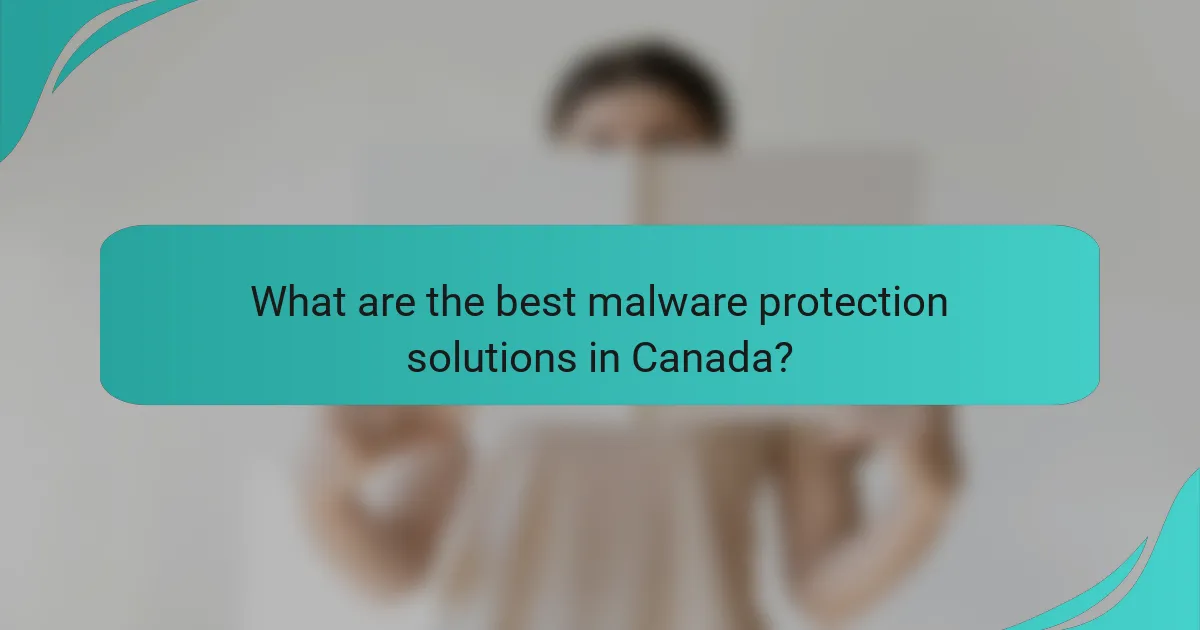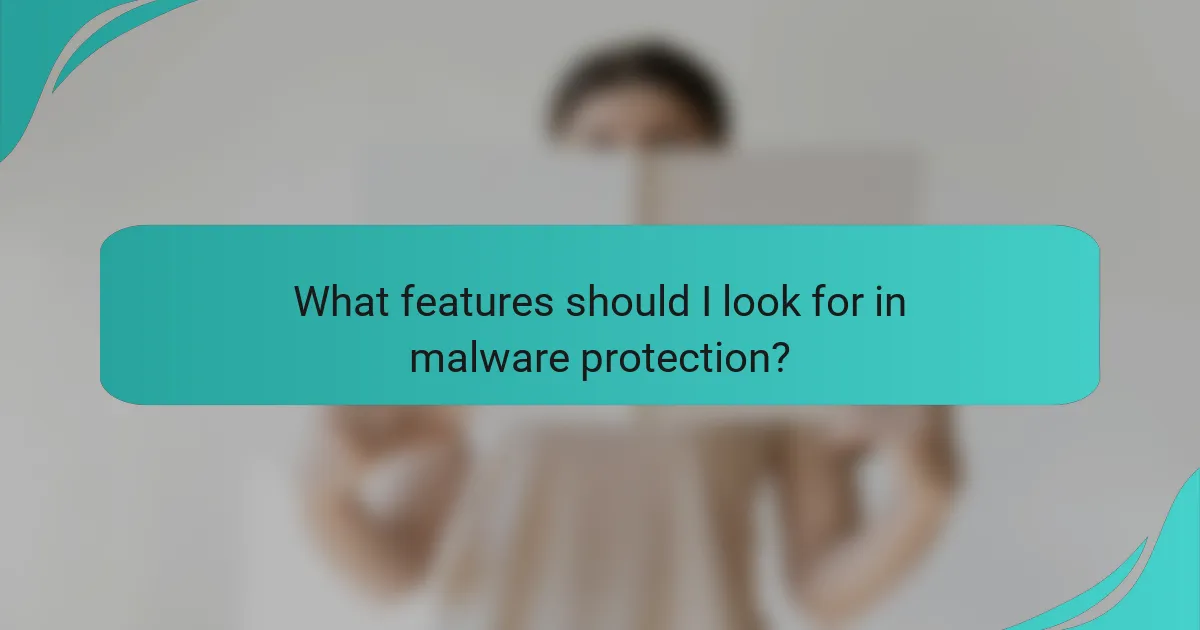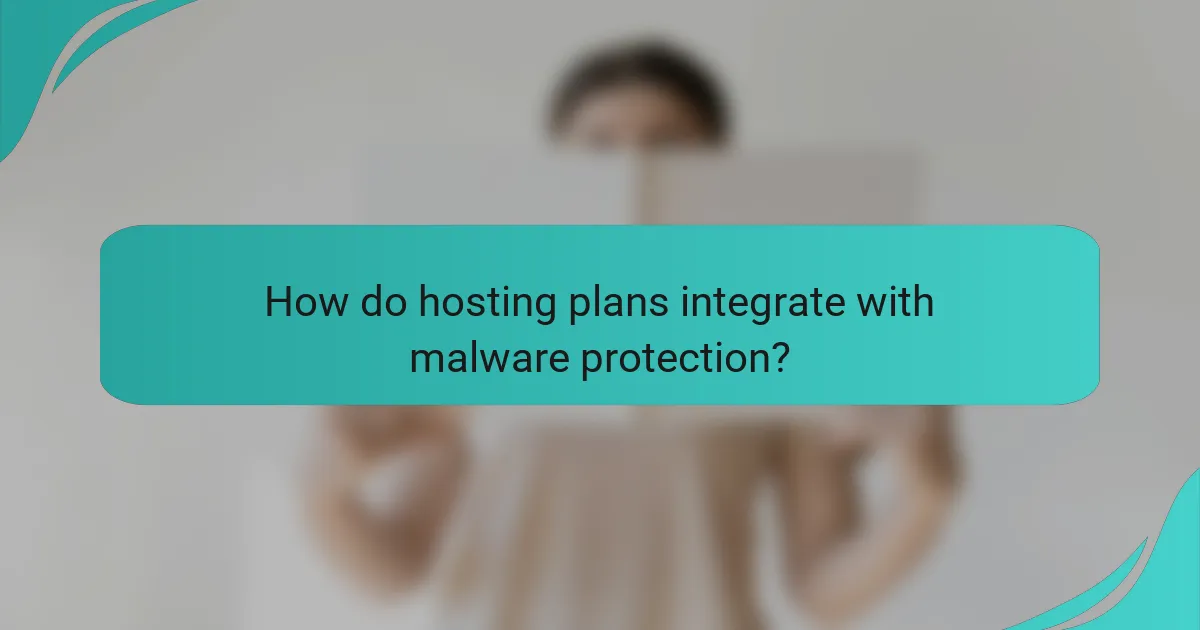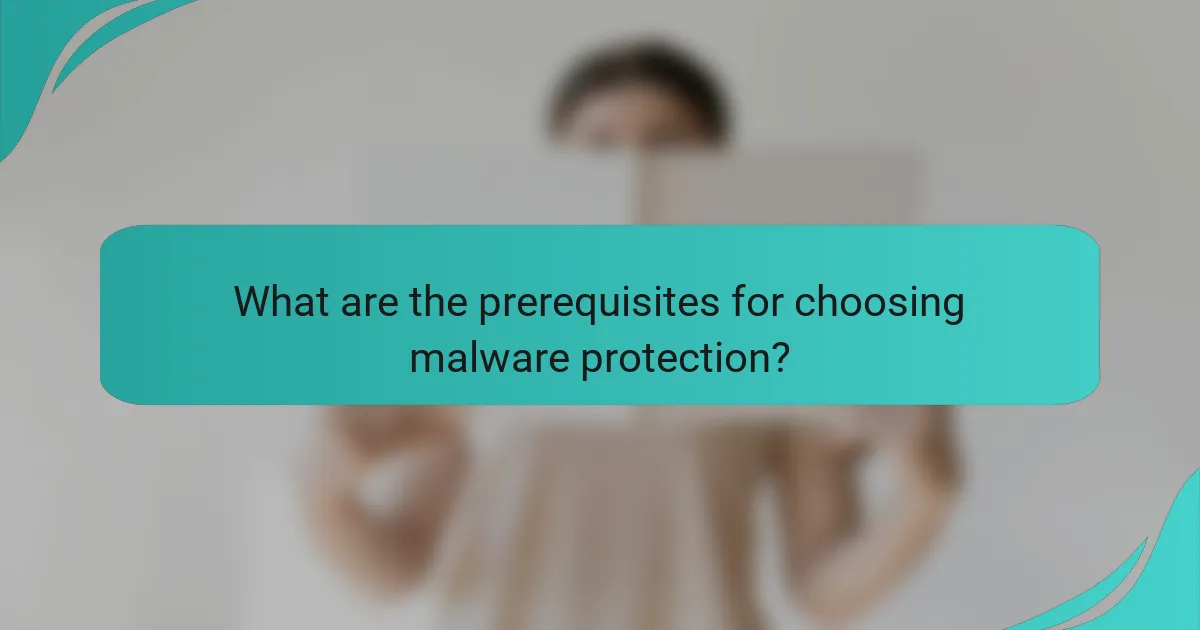In today’s digital landscape, robust malware protection is essential for safeguarding your devices and data. Leading solutions like Norton 360, Bitdefender, and McAfee offer effective threat detection and seamless integration with hosting plans. When choosing a malware protection tool, it’s crucial to consider features such as real-time protection, multi-device support, and performance impact to ensure comprehensive security.

What are the best malware protection solutions in Canada?
The best malware protection solutions in Canada include Norton 360, Bitdefender Antivirus Plus, McAfee Total Protection, Kaspersky Internet Security, and Webroot SecureAnywhere. These options offer robust features, effective threat detection, and integration capabilities with various hosting plans.
Norton 360
Norton 360 provides comprehensive malware protection with features like real-time threat detection, a firewall, and VPN services. It is designed to safeguard devices against a wide range of malware, including viruses, ransomware, and spyware.
Consider its multi-device support, which allows protection for PCs, Macs, smartphones, and tablets under a single subscription. The user-friendly interface makes it accessible for both tech-savvy users and beginners.
Bitdefender Antivirus Plus
Bitdefender Antivirus Plus is known for its strong malware detection rates and minimal impact on system performance. It employs advanced algorithms to identify and neutralize threats before they can cause harm.
This solution includes features like anti-phishing, anti-fraud, and a password manager, enhancing overall security. Its multi-layered protection ensures that users can browse the internet safely without compromising speed.
McAfee Total Protection
McAfee Total Protection offers extensive malware protection along with identity theft protection features. It includes a secure VPN, web protection, and a password manager, making it a comprehensive security suite.
One of its key advantages is the ability to cover multiple devices with a single subscription, which is ideal for families or small businesses. Users should be aware of its occasional performance impact during scans.
Kaspersky Internet Security
Kaspersky Internet Security is highly regarded for its effective malware detection and removal capabilities. It combines traditional antivirus features with advanced security technologies to protect against both known and emerging threats.
The solution includes privacy tools, such as webcam protection and secure online transactions, making it suitable for users concerned about their online safety. Regular updates ensure that users are protected against the latest threats.
Webroot SecureAnywhere
Webroot SecureAnywhere is a cloud-based antivirus solution that offers fast scans and low system resource usage. Its unique approach allows for quick installation and updates, making it convenient for users.
This software is particularly effective against ransomware and phishing attacks. Its lightweight nature makes it a good choice for users with older hardware or those who prioritize system performance.

How effective are malware protection tools?
Malware protection tools are generally effective at detecting and neutralizing threats, but their performance can vary based on several factors, including the specific tool used and the type of malware. Users should consider detection rates, real-time protection capabilities, and the impact on system performance when evaluating these tools.
Detection rates
Detection rates refer to how well malware protection tools identify and block malicious software. Most reputable tools boast detection rates between 90% to 99%, but this can fluctuate based on the malware’s complexity and the software’s database updates. Regular updates are crucial for maintaining high detection rates, as new threats emerge constantly.
To ensure optimal protection, choose tools that provide frequent updates and have a proven track record in independent lab tests. Look for certifications from organizations like AV-Test or AV-Comparatives, which assess the effectiveness of these tools against a variety of malware.
Real-time protection
Real-time protection is a feature that actively monitors your system for potential threats as they occur. This proactive approach helps prevent malware from executing and causing harm. Many tools offer this feature, but the effectiveness can vary; some may introduce delays or false positives that disrupt normal operations.
When selecting a malware protection tool, prioritize those that offer robust real-time scanning without significantly slowing down your system. Look for user reviews and performance benchmarks to gauge how well the tool performs under typical usage conditions.
Impact on system performance
The impact of malware protection tools on system performance can be a concern for users, especially on older machines. While most modern tools are designed to minimize resource usage, some may still cause noticeable slowdowns during scans or updates. Users should aim for a balance between security and performance.
To mitigate performance issues, consider tools that allow you to schedule scans during off-peak hours or those that offer lightweight versions. Additionally, regularly monitor your system’s performance and adjust settings as necessary to ensure that security measures do not hinder productivity.

What features should I look for in malware protection?
When selecting malware protection, prioritize features that enhance security, usability, and compatibility. Key aspects include behavioral analysis, multi-device support, and VPN integration, which collectively strengthen your defense against various threats.
Behavioral analysis
Behavioral analysis monitors applications and processes in real-time to identify suspicious activities. This proactive approach helps detect malware that traditional signature-based methods might miss, as it focuses on behavior rather than known threats.
Consider solutions that utilize machine learning to improve detection accuracy over time. Look for software that can adapt to new threats, as malware evolves rapidly, making static defenses less effective.
Multi-device support
Multi-device support ensures that your malware protection extends across various platforms, including desktops, laptops, tablets, and smartphones. This feature is essential for users who operate multiple devices, as it provides a unified security solution.
When evaluating options, check if the software covers popular operating systems like Windows, macOS, Android, and iOS. Additionally, consider whether it allows for easy management of all devices from a single dashboard, simplifying oversight and updates.
VPN integration
VPN integration enhances your malware protection by encrypting internet traffic, which helps safeguard sensitive data from interception. This feature is particularly valuable when using public Wi-Fi networks, where the risk of attacks is higher.
Look for malware protection that includes a built-in VPN or offers seamless integration with existing VPN services. Ensure that the VPN provides adequate speed and server options, as performance can vary significantly between providers.

How do hosting plans integrate with malware protection?
Hosting plans integrate with malware protection by offering built-in security features that help safeguard websites from malicious attacks. These features vary by hosting type and can include automated scanning, real-time monitoring, and proactive threat detection.
Managed WordPress hosting
Managed WordPress hosting typically includes robust malware protection tailored specifically for WordPress sites. This often involves automatic updates for WordPress core, themes, and plugins, along with regular security scans to identify vulnerabilities.
Providers may also offer features like firewalls and malware removal services, ensuring that any detected threats are promptly addressed. When selecting a managed WordPress host, consider their security protocols and response times for handling incidents.
Cloud hosting solutions
Cloud hosting solutions generally provide scalable resources along with integrated malware protection. These services often utilize distributed networks to enhance security, making it harder for attackers to target a single point of failure.
Many cloud providers implement advanced security measures such as intrusion detection systems and automated backups. When choosing a cloud hosting provider, evaluate their security offerings and ensure they comply with industry standards for data protection.
Dedicated server security
Dedicated server security requires a more hands-on approach, as users have complete control over their server environment. This allows for the implementation of custom security measures, including firewalls, intrusion detection systems, and regular software updates.
However, the responsibility for maintaining security falls entirely on the user. It is crucial to regularly audit the server for vulnerabilities and to consider managed security services if you lack the expertise to handle these tasks effectively.

What are the prerequisites for choosing malware protection?
Choosing effective malware protection requires understanding your specific needs, the types of threats you face, and the compatibility with your hosting plan. Assessing these factors ensures you select a solution that provides adequate security without unnecessary complexity or cost.
Assessing your threat level
To assess your threat level, consider the nature of your business, the data you handle, and your online presence. Businesses dealing with sensitive customer information or operating in regulated industries, such as finance or healthcare, face higher risks and require more robust protection.
Evaluate potential threats, including phishing attacks, ransomware, and data breaches. A simple risk assessment can help you identify vulnerabilities and prioritize the necessary security measures. For example, if you run an e-commerce site, you may need advanced malware protection to safeguard payment information.
Regularly review your threat level as your business evolves. Changes in operations, such as expanding online services or increasing customer data collection, may necessitate enhanced security measures. Staying informed about emerging threats and adjusting your protection strategy accordingly is crucial for maintaining security.









